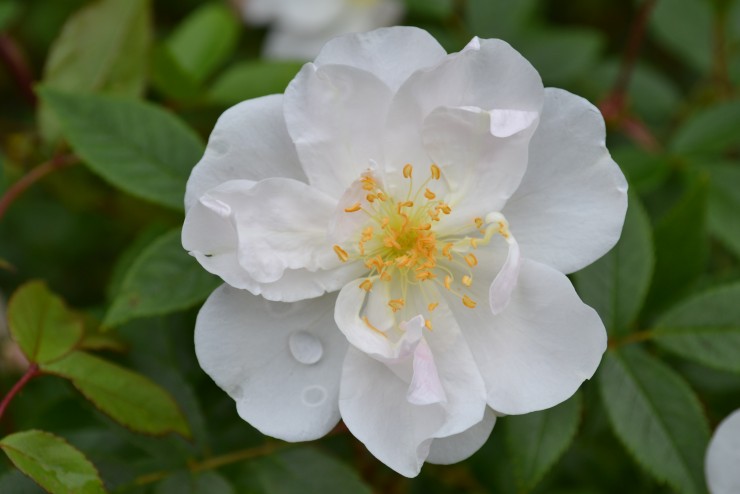Established in 1998, the Léonie Bell Rose Garden at the Center for Historic Plants (CHP) was made possible by a generous grant from Louis Bell in memory of his wife, the late rosarian, author and botanical illustrator Léonie Bell. Mrs. Bell's contributions to the knowledge of old roses, especially the class known as Noisettes, was critical to our preservation of these plants today. Detailing her own research and experiences in her Pennsylvania garden, she wrote countless articles on old roses for national and international societies such as the Heritage Roses Group, the American Rose Society and the Royal National Rose Society. Mrs. Bell was mentor to many prominent experts in the field, including Dr. Arthur O. Tucker of Delaware State University and Rev. Douglas Seidel of Emmaus, Pennsylvania. It was Rev. Seidel who arranged for many of the more rare Noisette specimens to be included in this garden, and even donated prized plants from his personal collection.
The story of the Noisette class of roses began at the dawn of the nineteenth century in Charleston, South Carolina, on the plantation of John Champneys. In Champneys’ garden two parent roses, the white European Musk and the deep rose-colored, repeat-blooming Old Blush China Rose, crossed to produce a very desirable offspring bearing clusters of pale pink flowers throughout the season with the sweet fragrance of the Musk. This rose, which he named ‘Champneys Pink Cluster,' traveled to France where rose breeder Louis Noisette went on to develop countless varieties from Champneys' seminal cross. Thus, the class was named after Noisette, even though it originated in a southern North American garden.
The Bell Garden was designed to tell the story of the rose breeding and development that ensued with this first American rose hybrid. It contains over sixty different Noisette, Musk and China roses, including many one-of-a-kind selections. Rev. Seidel generously donated what he called "two of Léonie's favorites:" Aunt Louisa Rose from the Ohio garden of President James Garfield's aunt and Faded Pink Monthly from Creek Side, the Maryland home of pioneer antique rose collector Ethelyn Emery Keays.
This garden, designed by landscape architect and historian C. Allan Brown, is reflective of 18th- and 19th-century Rosary Gardens, which were planted generally in a circular design creating an intimate enclosure of roses either festooning as garlands or freely flowering as bushes. The Bell Garden is in the shape of an octagon, one of Thomas Jefferson's favorite forms, with paths bisecting the center and surrounded by eight-foot posts connected with chains for the climbing sorts. CHP's former nursery manager, Diane Lowe, and Monticello's former master carpenter/jack-of-all-trades Dick Proffit are to be commended for their fine work in executing this project. Special thanks go also to Wayne Goodall, CHP's dedicated volunteer, for her ideas and always appreciated involvement.
In addition to Louis Bell's contribution toward the garden's construction, CHP has received support from members of the Heritage Roses Group, The Philadelphia Rose Society, and other individuals with a passion for rose preservation and enduring esteem for Léonie Bell.









